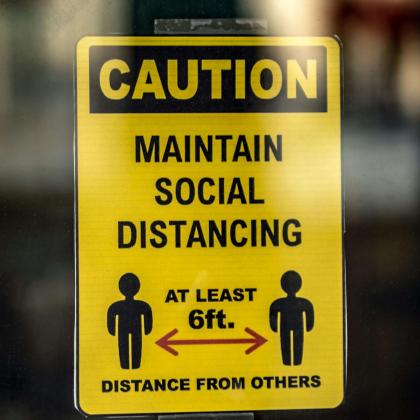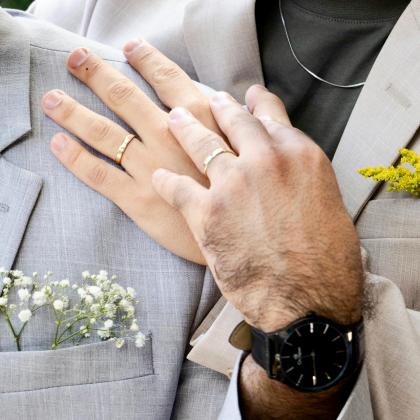Understanding Grief as a Healthcare Professional
What is Grief?
Grief is a response to change.
While commonly linked to bereavement, grief can arise in many contexts, including illness, injury, and life transitions.
It’s not a pathology or a personal failing. Grief is a developmental process—a natural part of how humans adapt to change across the lifespan.

Things We Might Grieve
Grief can be tied to any experience that disrupts our sense of identity, safety, connection, or routine.
Death
Death
- Death of someone personally known (e.g., family member, friend, mentor, neighbor)
- Death of a beloved animal
- Death of a public figure (e.g., author, musician, community leader)
- Infertility or pregnancy loss
Examples of Things We Might Grieve

Changes to Ability, Identity, or Body Image
- Birth control pills or hormone replacement therapy (HRT): weight gain, breast enlargement or tenderness, and changes in fat distribution
- Changes to the body/body image related to medical treatment
- Surgical interventions: mastectomy, orchiectomy, other types of amputation
- Corticosteroids: weight gain, "moon face," acne, and fat redistribution (e.g., buffalo hump), muscle wasting or thinning of the skin
- Androgen deprivation therapy: breast tissue enlargement in males, reduced body hair, weight changes
- Estrogen therapy: breast development, body fat redistribution
- Testosterone therapy: facial/body hair growth, voice deepening, acne, hair loss
- Antipsychotics: may lead to breast tissue enlargement in males and lactation
- Cognitive decline or loss of mental clarity (e.g., dementia, TBI)
- Diagnosis of a learning disability, mental health condition, or chronic illness
- Gender-affirming care/Denial of gender-affirming care
- Infertility
- Loss of autonomy or independence (a person who can no longer drive, live alone, or manage daily tasks due to illness)
- Loss of mobility (e.g., after a spinal cord injury or amputation)
- Loss of physical ability due to injury, illness, or surgery
- Loss of professional role or licensure (A clinician who loses their license may grieve not only the job, but a core part of their identity and purpose)
- Menopause
- Role changes that affect identity (e.g., no longer a sibling after a sibling’s death)

Disappointments and Missed Opportunities
- Not getting a job, promotion, award, or grant
- Career setbacks or academic rejections
Displacement/Separation
- Deportation
- Foster care placement
- Experiencing homelessness
- Immigration
- Incarceration
- Military deployment
Environmental and Social Losses
- Natural disasters
- Loss of home or community
- Loss of normalcy or routine (e.g., during the COVID-19 pandemic)
- Loss of safety due to abuse, violence, systemic harm, or war
- Loss of treasured or sentimental items

Loss of Safety, Trust, or Belonging
- Experiencing moral injury as a provider
- Experiencing harm, harassment, or discrimination and no longer feeling safe in a familiar environment
- Loss of trust in caregivers or healthcare providers (after a medical error or misdiagnosis)
- Loss of trust in the system (provider who advocates for a treatment that’s denied by insurance may feel powerless, grieving their sense of justice or professional integrity)
Relationship Changes
- Breakups or divorce
- Conflict or disconnection with peers
- Colleagues changing jobs, being laid off, retiring
- Ending of a long-term clinician-patient bond ( discharge, transfer)
- Estrangement from family or friends
- Loss or shift in custody/caregiving roles
- Social exclusion or marginalization

Grief can arise from many types of loss or change.
This is not an exhaustive list. Displacement, natural disasters, and immigration can all trigger grief, as can financial or career disappointments. The loss of a home, a sense of normalcy, or a treasured item can carry deep emotional weight. What matters is whether the loss or change disrupts a person’s sense of safety, stability, or identity.
Grief can arise during positive life events, too.
Milestones like graduation, retirement, or the birth of a child often bring a mix of emotions. Joy and grief can coexist—especially when change involves letting go of what was.
Life Transitions
Changes that may be planned or positive but still involve loss of routine, roles, or expectations:
- Adoption or birth
- Changing jobs
- Graduation
- Marriage
- Moving to a new home
- Retirement

All grief is valid
If we don’t name the grief that can come with joyful life changes, it’s easy to misinterpret our own emotions. Feeling sadness, fear, or anxiety during a “positive” event doesn’t mean we’re ungrateful—it means we’re human. Recognizing this helps us respond with compassion instead of confusion or shame.

We can grieve things we choose.
Even when a decision is voluntary—like ending a relationship or stopping treatment—it can still carry loss. Having agency doesn’t cancel out the emotional impact; grief and choice can exist side by side.
Grief is the internal experience—the thoughts, feelings, and physical responses we have after a loss.
Mourning is how we express that grief outwardly, often shaped by culture, rituals, or personal practices.
In short: Grief is what we feel. Mourning is what we do.
Grief is natural, normal, and healthy
Grief is a natural response to meaningful disruption—whether from loss, transition, or change. Its impact is far-reaching, influencing our emotions, cognition, physical health, and daily functioning.